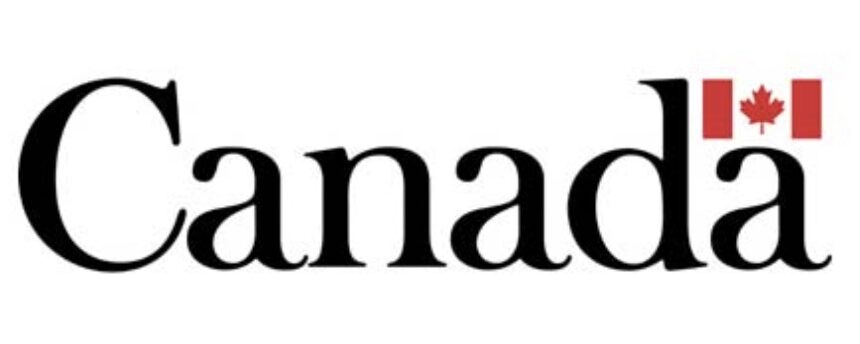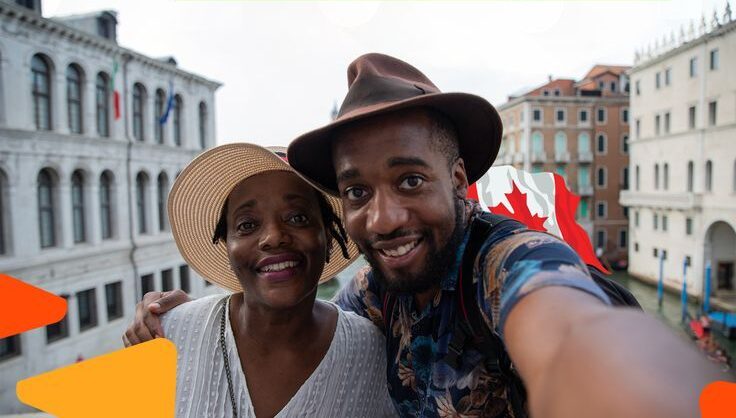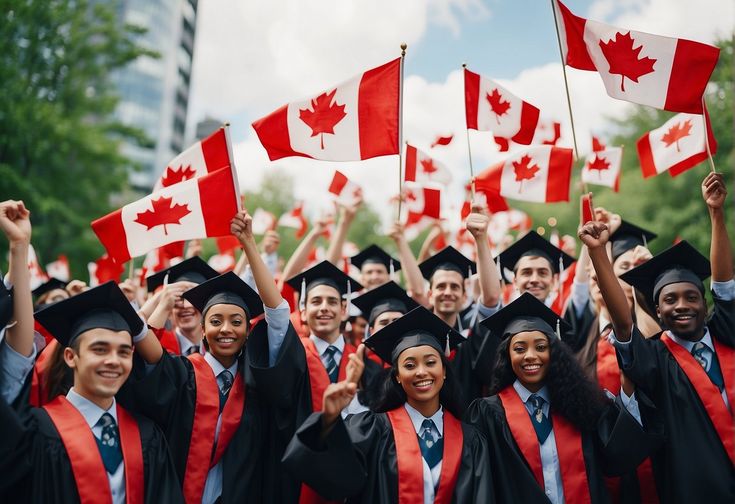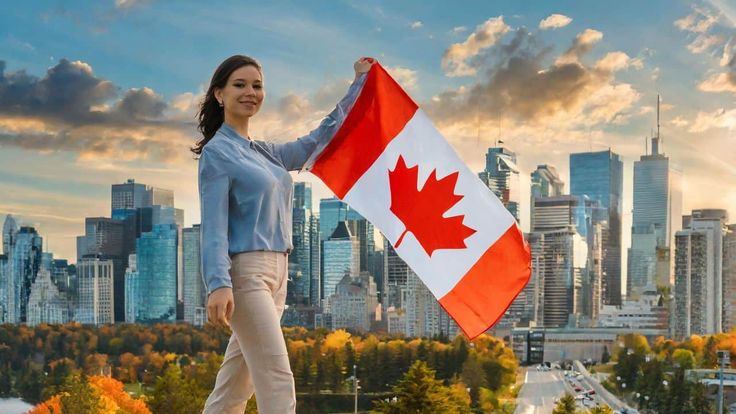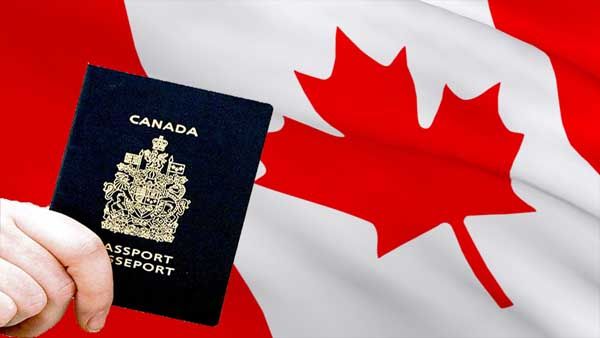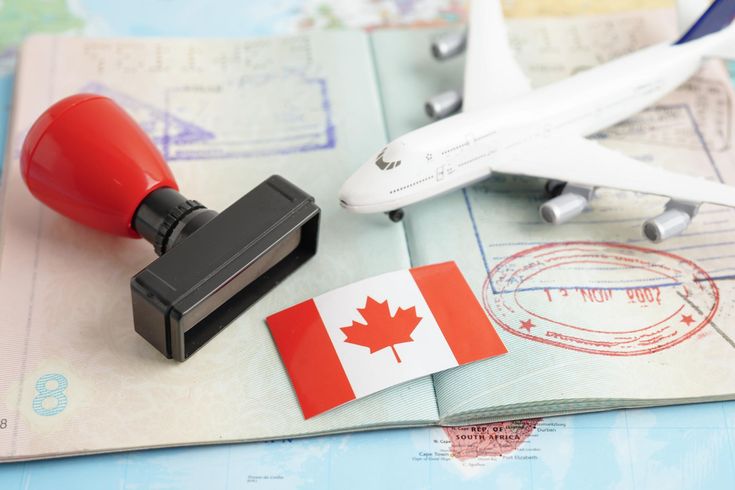How to Sponsor Your Partner for a Canadian Visa After Marriage
1. Understanding Spousal Sponsorship
What is Spousal Sponsorship?
Spousal sponsorship is a pathway for Canadian citizens and permanent residents to sponsor their foreign spouses or common-law partners to immigrate to Canada. The sponsored partner can obtain permanent residency, allowing them to live, work, and study in Canada. This program is designed to reunite families and strengthen the social fabric of Canadian society.
Find your Eligibility for FREE!!
Eligibility Requirements
To sponsor your partner, you must meet specific eligibility requirements:
-
Sponsor Requirements: You must be a Canadian citizen or permanent resident, at least 18 years old, and reside in Canada or plan to return to Canada once your partner becomes a permanent resident. Additionally, you must demonstrate that you can financially support your partner and any dependents without relying on social assistance.
-
Sponsored Partner Requirements: Your partner must be at least 18 years old and pass background, security, and medical checks. They must also be admissible to Canada, which means they cannot have a criminal record or pose a security risk.
Types of Relationships
Canada recognizes various types of relationships for immigration purposes:
- Spouse: Legally married partners.
- Common-Law Partner: Partners who have lived together continuously for at least one year in a conjugal relationship.
- Conjugal Partner: Partners who have been in a committed relationship for at least one year but have not lived together due to exceptional circumstances beyond their control.
2. Types of Spousal Sponsorship
Inland Sponsorship
Inland sponsorship is for partners already living in Canada with temporary status, such as a visitor, student, or worker. The application is processed within Canada, and the sponsored partner can remain in the country while awaiting a decision. This option allows couples to stay together throughout the application process.
Outland Sponsorship
Outland sponsorship is for partners living outside Canada. The application is processed through a visa office in the sponsored partner’s home country or region. The sponsored partner can travel to Canada once the application is approved. This option may be faster but requires the couple to be separated during the processing time.
Choosing Between Inland and Outland Sponsorship
The choice between inland and outland sponsorship depends on your personal circumstances. Inland sponsorship allows you to stay together in Canada but may take longer to process. Outland sponsorship can be faster but requires you to be apart during the application process. Consider your priorities and consult with an immigration professional if needed.
3. Application Process
Gathering Documents
The application process involves gathering various documents to prove your relationship and meet eligibility requirements. Some essential documents include:
-
Marriage Certificate: A valid marriage certificate from the country where the marriage took place. If the certificate is not in English or French, you will need a certified translation.
-
Proof of Relationship: Photos, correspondence, and other evidence demonstrating your genuine relationship. This can include joint bank accounts, shared bills, and letters from friends and family attesting to your relationship.
-
Financial Documents: Proof of the sponsor’s financial ability to support the sponsored partner. This can include tax returns, pay stubs, and bank statements.
-
Background Checks: Police certificates from all countries where the sponsored partner has lived for six months or more since the age of 18.
-
Medical Exam: The sponsored partner must undergo a medical exam by a panel physician approved by Immigration, Refugees and Citizenship Canada (IRCC).
Submitting the Application
Once you have gathered all the required documents, you can submit your application online or by mail. Ensure that your application is complete and accurate to avoid delays. Incomplete applications may be returned, causing further delays in the processing time.
Processing Times
Processing times for spousal sponsorship applications vary depending on the type of application and the visa office processing it. Inland applications typically take around 12 months, while outland applications can take up to 24 months. However, these times can vary, and it’s essential to check the IRCC website for the most up-to-date processing times.
Tracking Your Application
After submitting your application, you can track its progress online through the IRCC website. You will receive a unique application number that you can use to check the status of your application. If there are any changes in your circumstances, such as a change of address or new contact information, you must inform IRCC immediately.
4. Preparing for Life in Canada
Finding Accommodation
Finding suitable accommodation is crucial for a smooth transition to life in Canada. Explore affordable temporary housing options and this comprehensive guide to finding cheap apartments for new immigrants. Consider factors like location, cost, and proximity to work or school when choosing your accommodation.
Employment Opportunities
Securing employment is a top priority for many new immigrants. Consider exploring high-paying warehouse worker jobs or fruit picker jobs with visa sponsorship to support your new life in Canada. Networking, volunteering, and utilizing employment services can also enhance your job prospects.
Government Assistance
New immigrants can access various government assistance programs to help with settlement and integration. These programs can provide financial support, language training, and employment services. Research the available programs in your province or territory and apply for those that meet your needs.
Healthcare
Understanding how the Canadian healthcare system works is essential. Apply for health insurance as soon as possible, as some provinces offer free healthcare for new immigrants. Familiarize yourself with the healthcare services available in your area and how to access them.
Education
If you plan to study in Canada, research scholarship opportunities that cover tuition and visa sponsorship. Check out these scholarships in Canada for more information. Additionally, consider enrolling in language classes to improve your English or French skills, which can enhance your employment prospects.
5. Overcoming Challenges
Financial Struggles
Moving to a new country can be financially challenging. Consider part-time jobs, side hustles, and budgeting strategies to manage your finances. Explore care assistant jobs or pet care jobs to supplement your income. Creating a budget and sticking to it can help you manage your expenses and save for the future.
Cultural Adaptation
Adapting to a new culture can be overwhelming. Join cultural groups, attend community events, and seek support from fellow immigrants to ease the transition. Engaging with your new community can help you feel more at home and build a support network.
Employment Barriers
Finding a job without Canadian work experience can be difficult. Consider volunteering, internships, and entry-level positions to gain experience. Utilize the best websites to find job openings in Canada for foreign workers. Networking and building professional relationships can also enhance your job prospects.
Language Barriers
Language barriers can be a significant challenge for new immigrants. Enroll in language classes to improve your English or French skills. Practicing with native speakers and immersing yourself in the language can also help you become more proficient.
6. Pathways to Permanent Residency
Express Entry Program
The Express Entry program is a popular pathway to permanent residency for skilled workers. Improve your chances of getting hired in Canada by following these tips. This program is points-based and considers factors like age, education, work experience, and language proficiency.
Marriage and Partner Visas
If you have a partner or spouse in Canada, explore the 5 ways to get a Canada marriage visa and learn how to apply for a spouse visa through marriage. Understanding the different pathways to permanent residency can help you make informed decisions about your future in Canada.
Provincial Nominee Program (PNP)
The Provincial Nominee Program (PNP) allows provinces and territories to nominate candidates who meet specific labor market needs. Each province has its own streams and requirements, so research the options available in your desired province.
7. Success Stories
Many couples have successfully navigated the spousal sponsorship process and built prosperous lives in Canada. Reading their stories can provide inspiration and motivation as you embark on your own journey. These stories highlight the challenges and triumphs of the immigration process and offer valuable insights into what to expect.
Story of Sarah and Ahmed
Sarah, a Canadian citizen, met Ahmed while traveling in Europe. They fell in love and decided to get married. After their wedding, Sarah began the process of sponsoring Ahmed for a Canadian visa. They chose outland sponsorship because Ahmed had a stable job in his home country and wanted to continue working while awaiting the application decision.
Sarah gathered all the required documents, including their marriage certificate, photos from their wedding and travels, and financial statements. Ahmed underwent a medical exam and obtained police certificates from his home country. They submitted their application and waited patiently for the processing to be completed.
During this time, Sarah and Ahmed stayed in touch through video calls and messages, planning their future together in Canada. After about a year, Ahmed received his visa approval and was able to travel to Canada. They settled in Toronto, where Sarah helped Ahmed find a job and adapt to his new environment.
Story of Maria and Carlos
Maria, a permanent resident of Canada, met Carlos while studying in the United States. They decided to get married and build a life together in Canada. Maria chose inland sponsorship because Carlos was already living with her in Canada on a student visa.
Maria and Carlos gathered their documents, including their marriage certificate, joint bank statements, and letters from friends attesting to their relationship. They submitted their application and waited for the processing to be completed. During this time, Carlos continued his studies and worked part-time.
After about a year, Carlos received his permanent residency approval. They celebrated this milestone and began planning their future together. Maria and Carlos decided to settle in Vancouver, where they both found jobs in their respective fields. They enjoyed exploring their new city and building a life together in Canada.
8. Tips for a Successful Application
Be Organized
Gather all the required documents before starting your application. Keep them organized in a folder or binder, and make copies of everything. This will help you stay on top of the application process and ensure that you don’t miss any important steps.
Be Honest
Honesty is crucial in the immigration process. Provide accurate and truthful information in your application. Any misrepresentation or fraud can result in your application being refused or even banned from applying in the future.
Be Patient
The spousal sponsorship process can take time, and it’s essential to be patient. Keep track of your application status and respond promptly to any requests for additional information. Stay positive and focus on your future together in Canada.
Seek Professional Help
If you’re feeling overwhelmed by the application process, consider seeking help from an immigration professional. They can provide guidance and support throughout the process, ensuring that your application is complete and accurate.
9. Building a Life Together in Canada
Exploring Canada
Canada is a vast and diverse country with plenty to explore. From the bustling cities of Toronto and Vancouver to the natural wonders of the Rocky Mountains and the Northern Lights, there’s something for everyone. Take the time to explore your new home and create lasting memories with your partner.
Joining Communities
Joining communities and groups can help you feel more connected to your new home. Whether it’s a cultural group, a sports team, or a volunteer organization, finding a community that aligns with your interests can enhance your sense of belonging.
Planning for the Future
Building a life together in Canada involves planning for the future. This can include buying a home, starting a family, or pursuing career goals. Discuss your plans and aspirations with your partner and work together to achieve them.
10. Conclusion
Sponsoring your partner for a Canadian visa after marriage is a rewarding journey that requires careful planning and preparation. By understanding the requirements, gathering the necessary documents, and utilizing available resources, you can successfully navigate the process and build a new life together in Canada.
This comprehensive guide has provided detailed insights into each step of the spousal sponsorship process, from understanding the legal requirements to navigating the practicalities of settling in Canada. By following these guidelines and exploring the linked resources, you’ll be well on your way to sponsoring your partner for a Canadian visa and starting a new life together.
Remember, the journey may have its challenges, but with patience, perseverance, and a positive attitude, you can overcome them and build a prosperous future in Canada. Embrace this new chapter in your life with enthusiasm and a willingness to adapt, and you’ll find that Canada offers endless opportunities for growth and happiness.
